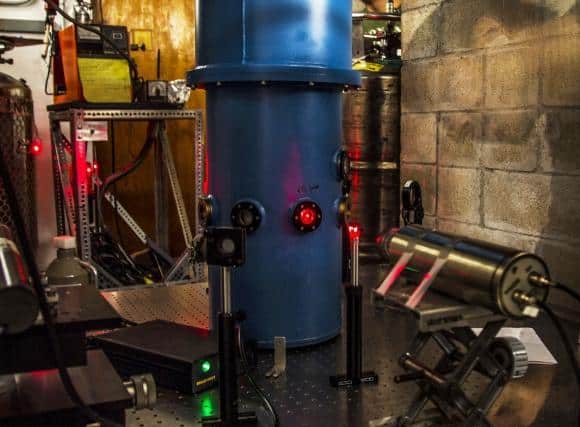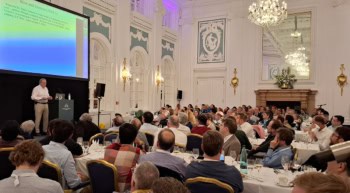
By Hamish Johnston
Every once in a while we come across a physics story that seems very interesting – but we just don’t know what to make of it. The latest comes in the form of a press release from Brown University in the US and concerns “electron bubbles” in liquid helium.
These bubbles are about 4 nm in diameter and are formed when a free electron moves through liquid helium and repels surrounding atoms. Physicists have been studying these bubbles for decades and in the 1960s they discovered something very strange when firing electrons across a tank of liquid helium and measuring the time it takes the bubbles to reach a detector on the other side.
All the bubbles should have been identical and take the same time to traverse the tank, but instead experiments done over the years have revealed a growing number of transit times. In the recent work by Humphrey Maris and colleagues at Brown, it appears that there is pretty well a continuum of transit times that are possible.
So what is going on? One possibility is that the experiments are detecting bubbles created by other things such as charged particles from the walls of the container or impurities in the helium. But Maris and colleagues (including the Nobel laureate Leon Cooper) say that the vast number of different times measured makes it very difficult to conceive how a few charged particles or impurities could be responsible.
Instead, they propose that the quantum wave function of the electron is being divided and trapped by a bubble. This is based on the fact that when the electron first encounters the helium it can be reflected back or transmitted in a bubble. Until a measurement is made on the position of the electron, it remains in a superposition of a reflected electron and a bubble electron. While no physicist would argue with that, it’s the next bit that has left us scratching our heads.
The Brown team seems to be saying that the bubbles that are detected are created only by the portion of the electron wave function that is transmitted. Furthermore, the nature of wave function portion affects the time it takes for the bubble to travel through the tank. Indeed, when the researchers use quantum mechanics to calculate which transmitted wave functions are most probable, they find 18 of them, which they identify with the 18 most frequently occurring bubble transit times measured in their experiment.
The team says that the key to making sense of all this is deciding exactly what a measurement is. You can read much more of what they have to say here and make up your own mind.



